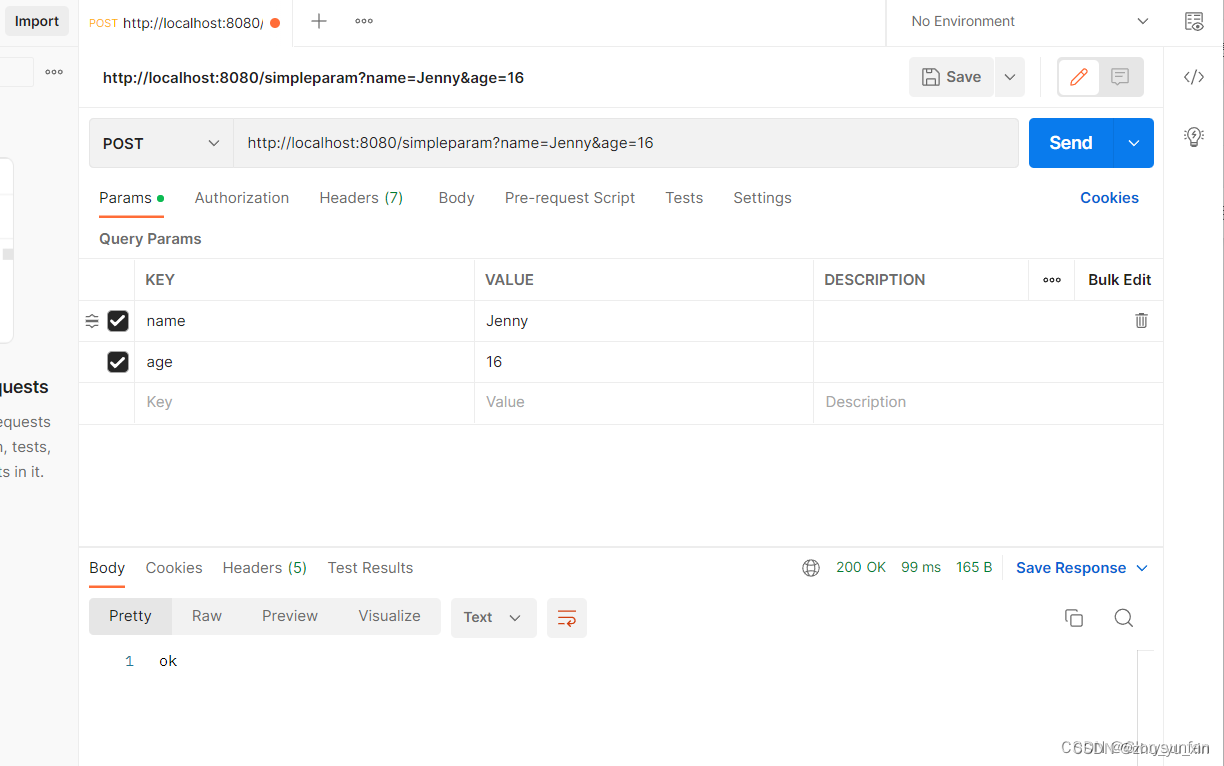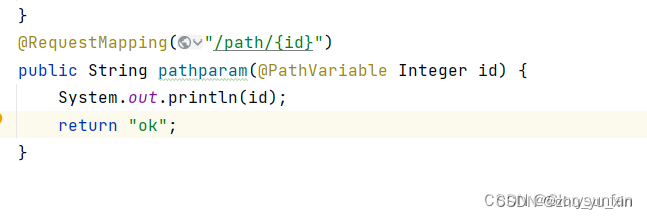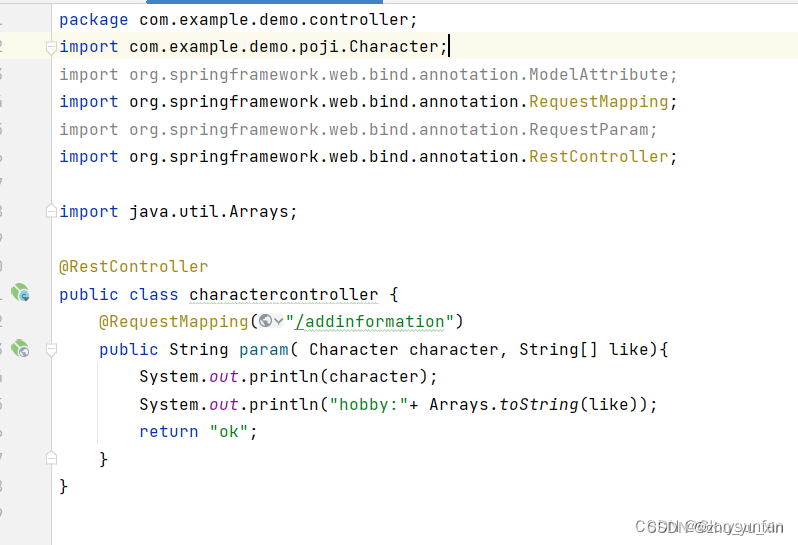springboot入门程序撰写并启动

使用postman练习参数的获取

体会前端页面向后端发送数据的过程
**<!DOCTYPE html>
<html lang="en">
<head>
<meta charset="UTF-8">
<title>Title</title>
</head>
<body style="font-size: 30px">
<form action="addProduct">产品名称 :<input type="text" name="name" value="">
<input type="submit" value="增加商品">
产品价格: <input type="text" name="price" value="">
test2,addProduct1 ,productResult.html
</form>
</body>
</html>**
package edu.wust.pojo;
public class Product {
private String name; private float price; public String getName() { return name; } public void setName(String name) { this.name = name; } public float getPrice() { return price; } public void setPrice(float price) { this.price = price; }}
package edu.wust.controller;
import edu.wust.pojo.Result;
import org.springframework.stereotype.Controller;
import org.springframework.web.bind.annotation.ModelAttribute;
import org.springframework.web.bind.annotation.RequestMapping;
import org.springframework.web.bind.annotation.RequestParam;
import org.springframework.web.bind.annotation.RestController;
import org.springframework.web.servlet.ModelAndView;import edu.wust.pojo.Product;
import javax.servlet.http.HttpServletRequest;
@RestController
public class ProductController {@RequestMapping("/addProduct1") public String simpleParam1(HttpServletRequest request) { String name = request.getParameter("name"); String ageStr = request.getParameter("price"); int price = Integer.parseInt(ageStr); System.out.println("addProduct1:"+name + " : " + price); return "OK"; } @RequestMapping("/addProduct") public String simpleParam(String name , Integer price){ System.out.println("您输入的信息是:"+name+" : "+price); return "OK"; } @RequestMapping("/addProduct2") public String simpleParam2(Product product){ System.out.println(product); return "OK"; }}
2、使用postman练习参数的获取。
2.1简单参数获取

 2.2实体参数获取
2.2实体参数获取


 2.3数组集合参数获取
2.3数组集合参数获取



2.4日期参数获取



 2.5json参数获取
2.5json参数获取



 2.6路径参数获取
2.6路径参数获取



三、体会前端页面向后端发送数据的过程。并且自己尝试将之前的注册页面的信息发送到服务端。
3.1product.html的操作代码,输入产品名称和价格,点击“增加商品”按钮,页面返回“ok”。服务台返回用户输入的值。相关页面如下:





 3.2尝试将之前的注册页面的信息发送到服务端。
3.2尝试将之前的注册页面的信息发送到服务端。




版权归原作者 zhu_yu_xin 所有, 如有侵权,请联系我们删除。